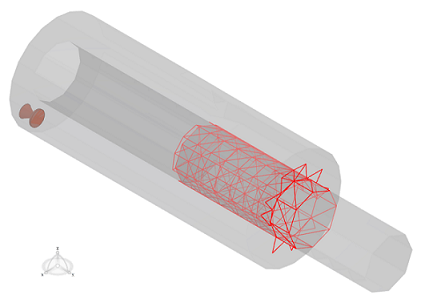About Mesh Conformity | |
| |
Non-Conformal Meshes
When meshing a model that has coincident faces, the app attempts to create a conformal mesh by matching the nodes and element faces on both sides of an interface. In some cases, however, creating a conformal mesh is challenging. For example, the app cannot easily match the interfaces of complex geometries or the interfaces of geometries that use different mesh sizes. In such instances, the result is a non-conformal mesh, which has both misaligned nodes and element faces. The image below depicts a conformal mesh (left) and a non-conformal mesh (right). The element faces at the mesh interface that create the non-conformal mesh were colored red intentionally to help show the lack of overlap between the meshes.

The image below provides an internal view of the mismatch of nodes and element faces within the same assembly.

For mold-cooling simulations, a conformal mesh is mandatory. However, you can run a filling, packing, or warp simulation successfully with non-conformal meshes.
Mesh Capture
Mesh capture is a technique to convert non-conformal meshes into conformal meshes. When a non-conformal mesh is present, you can select a source geometry and a target geometry, known as the mesh capture order. The app then projects the mesh at the surface of the source geometry onto the surface of the target geometry (that is, the target geometry "captures" the mesh.) The mesh capture results in a conformal mesh at the interface of the two geometries. Determining the mesh capture order is critical to the successful creation of a conformal mesh. For complex models with numerous shared geometries, this can be very challenging. You can modify your selections for the source and target geometries to improve the likelihood of creating a conformal mesh.